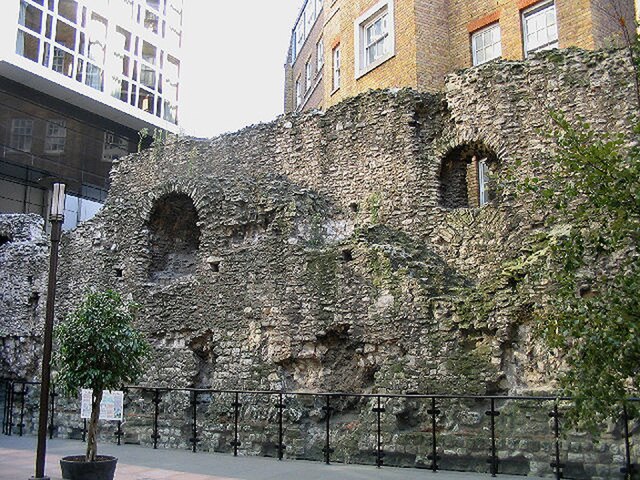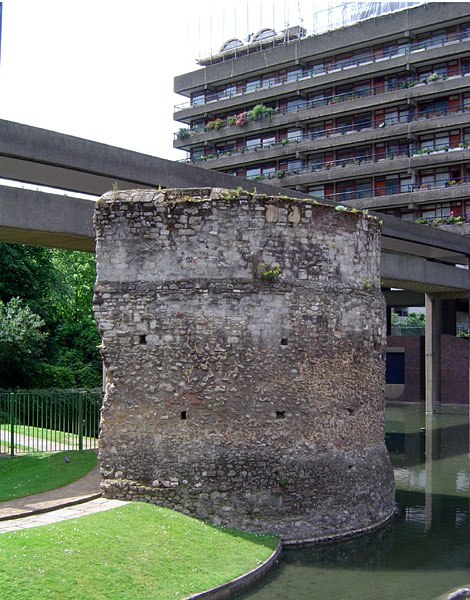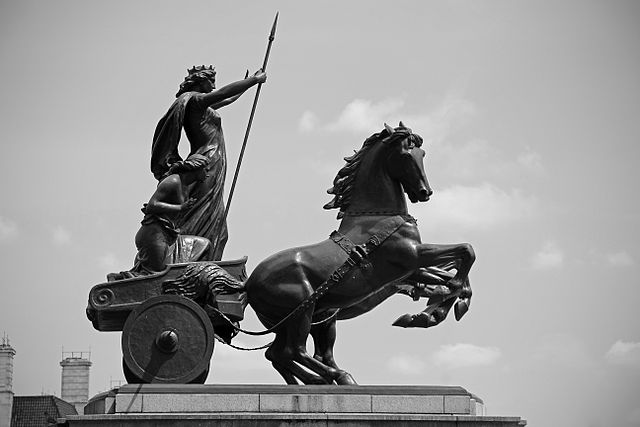The London Wall is a defensive wall first built by the Romans around the strategically important port town of Londinium in c. AD 200, as well as the name of a modern street in the City of London, England.
London Roman Wall – surviving section by Tower Hill gardens cross-section
A surviving fragment of the original 3rd-century Roman Wall in Cooper's Row near Tower Hill
Bastion 12, which is near the Barbican Estate, stands on Roman foundations with an upper structure of 13th-century masonry.
Yorkist forces attack the Lancastrians during the siege of London, 12–15 May 1471.
Londinium, also known as Roman London, was the capital of Roman Britain during most of the period of Roman rule. Most twenty-first century historians think that it was originally a settlement established shortly after the Claudian invasion of Britain, on the current site of the City of London around 47–50 AD, but some defend an older view that the city originated in a defensive enclosure constructed during the Claudian invasion in 43 AD. Its earliest securely-dated structure is a timber drain of 47 AD. It sat at a key ford at the River Thames which turned the city into a road nexus and major port, serving as a major commercial centre in Roman Britain until its abandonment during the 5th century.
The rediscovery of Tacitus's works revived English interest in Boudica, particularly during the 19th century, when she was used as a symbol for Queen Victoria and the British Empire. (Boadicea and Her Daughters by Thomas Thornycroft, 1860s, cast by his son in 1902.)
A model of London in 85–90 AD on display in the Museum of London, depicting the first bridge over the River Thames, shown as having been of largely wooden construction
A diagram of the Roman structures from the port of Londinium (c. AD 100) excavated along the north bank of the Thames, with warehouses at right
A bronze head of Hadrian found in the River Thames in London (British Museum)








